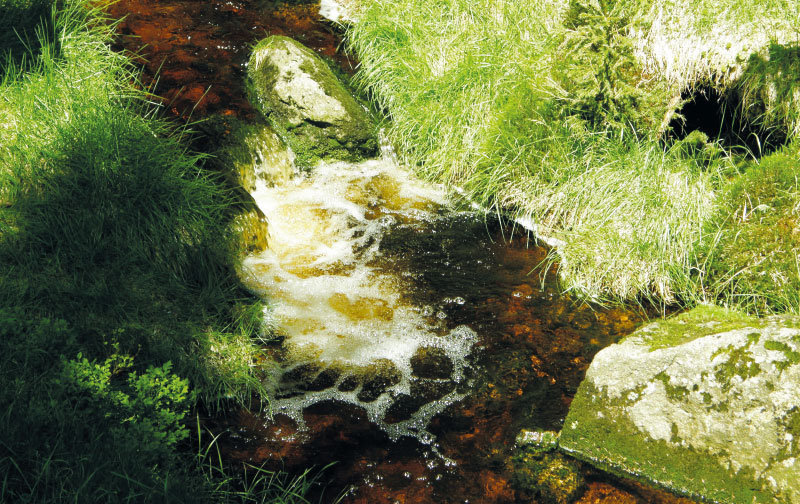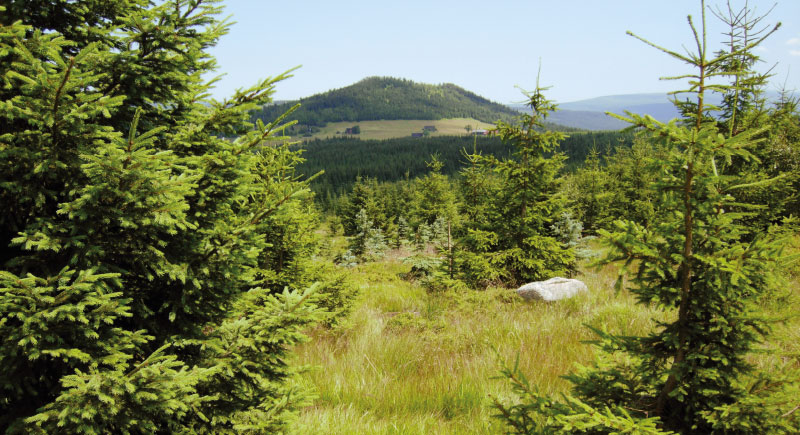
Fig. 1. View of the Bukovec Mt., a basalt cone above the Jizerka settlement (1,005 m a.s.l.), from the Vlašský hřeben mountain range with apparent signs of forest recovery; July 2007 (Photo: J. Křeček)
On 25th January 2024, a seminar Meeting of researchers in the Jizera Mountains was held in the conference centre of T. G. Masaryk Water Research Institute (TGM WRI) in Prague. It presented (mainly long-term) research projects implemented in the Jizera Mountains and focused on atmospheric precipitation, forest soils and forests, waters and their biota in recent decades, i.e. from peak acidification to current phenomena associated with climate change. However, no less important was the personal meeting of people who research, permanently work or live in the Jizera Mountains and are interested in the development of the situation in this area, as well as the final debate open to all.
Apart from researchers from the Museum of North Bohemia in Liberec, universities and academic and non-academic research institutions, we therefore also invited representatives of nature conservation authorities (primarily Jizera Mountains PLA Administration, but also Krkonoše National Park, Šumava National Park, and the Nature Conservation Agency of the Czech Republic), Povodí Labe, state enterprise, water industry-oriented companies (W&ET Team, Severočeská servisní) and water management (DHI), as well as the Czech Fishery Association. The meeting was also attended by university students, representatives of the Czech Society for Ornithology and ecological consultancy (EKOEX Jihlava), a volunteer ranger working for the Jizera Mountains PLA Administration, and others. Together with former and current TGM WRI employees, over a hundred people gathered in the hall.
As a hydrobiologist at TGM WRI, who has long been involved in the study of water reservoirs on the upper plateau of the Jizera Mountains within the long-term concept of the development of a research organization (DKRVO), I prepared the seminar with the organizational and financial support of the Institute and a financial contribution from the company Aon Central and Eastern Europe. I was inspired by the previous seminar, Jizera Mountains – meeting across scientific disciplines, which was organized in December 2012 at the Faculty of Agrobiology, Food and Natural Resources of the Czech University of Life Sciences in Prague (FAPPZ CZU) by prof. Radka Kodešová (Department of Pedology and Soil Protection, FAPPZ CZU) and Mgr. Šimon Bercha (Department of Applied Hydrology, CHMI) [1]. Its originally intended focus on hydrology and soil hydrology was expanded to include other research fields, as well as the activities of various public administration institutions in the Jizera Mountains, making this informal seminar a very interesting event. The second meeting of the Jizera Mountains researchers, defined by a professional focus on precipitation, waters, soils, and forests, was also prepared in such a way that, despite the large number of participants and the number of lectures, it retained an informal and friendly character.
The Jizera Mountains, part of the so-called Black Triangle, are one of the regions of the world that were most affected by acidic atmospheric deposition in the second half of the 20th century. Despite significant recovery from acidification and apparent restoration of waters and forests, this area faces many old and new issues. The main purpose of the meeting of experts who have been participating in its research and administration for a long time was therefore for them to find out about each other, their work and results – taking into account the fact that many of them are already close to retirement or already retired. It was also intended to be an inspiration for further work and collaboration.
Why was the seminar on the issue of the Jizera Mountains held under the Baba folly on the Vltava promontory in Prague? In addition to the simple reason that TGM WRI in Prague’s Podbaba is now my workplace, which had supported me in the later years of my thirty-year research on the Jizera Mountains reservoirs and which has a suitable facility for such a meeting, there are also other connections. Between 1942 and 1964, the first limnological study of all reservoirs in the Labe and Lužická Nisa basins was being developed in the Institute by Dr. Věra Řeháčková (later Rozmajzlová) [2]. The results regarding the water chemistry of the Bedřichov and Souš reservoirs confirm their high acidity, at that time still attributed only to the peaty character of the basin. The only data on the water chemistry of the Jizera Mountains reservoirs in the 1980s, summarized by Ing. Martina Bednářová [3, 4], are the output of projects of Ing. Ladislav Kašpárek from TGM WRI [5]. The research of his working group (similarly as in the case of the team of Ing. Libuše Bubeníčková from CHMI) dealt with the effect of deforestation on the hydrology and quality of surface waters in the headwater area of the Jizera Mountains. This immission calamity as well as extremely low water pH values in the 1980s were already clearly associated with acid rain.
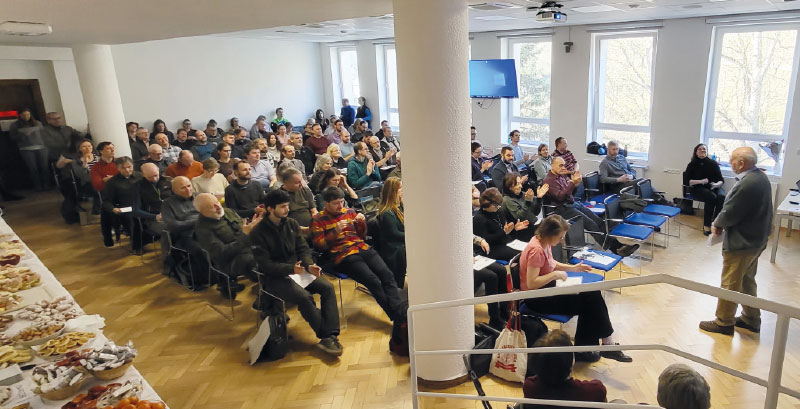
Fig. 2. Contribution of Ing. Ladislav Kašpárek to the importance of experimental basins (not only) in the Jizera Mts. for the assessment of changes in the hydrological regime in connection with deforestation. (Photo: V. Mrázek)
In the course of the day, which was started with humour and ease by TGM WRI director Ing. Tomáš Fojtík, 22 short lectures were given. They were divided into four specialist sections – hydrology and hydrochemistry, forest soils and forests, waters, and water biota. Chairing the sections were Dr. Vít Kodeš (CHMI), doc. Pavel Jurajda (Institute of Vertebrate Biology, CAS), Dr. Jan (“Jeňýk”) Hofmeister (Faculty of Forestry and Wood Sciences of the Czech University of Life Sciences in Prague, FLD CZU), and Ing. Pavel Vonička (Museum of North Bohemia, Liberec). Thanks to their strict time monitoring, there was room for refreshments, meetings, and offstage discussions during the day. a short film with commentary by doc. Petr Dolejš (W&ET Team) from his flight over the Jizera Mountains reservoirs was also shown.
It was a great honour to be able to welcome the leading ladies of Czech hydrology to the seminar – prof. Milena Císlerová (Faculty of Civil Engineering, CTU), Ing. Libuše Bubeníčková (CHMI), Ing. Alena Kulasová (TGM WRI), and prof. Radka Kodešová (FAPPZ CZU). Among the special guests who did not make a contribution were also the head of the Bedřichov dam, Petr Noswitz (Povodí Labe, state enterprise), Dr. Miroslav Švátora (Faculty of Science, Charles University), Ing. Tomáš Kava (Czech Fishery Association), Dr. Iva Bufková and Ing. Eva Zelenková (Šumava NP), prof. Jaroslav Vrba (Faculty of Science, University of South Bohemia) and former colleagues Rudolf Hancvencl (CHMI), Ing. Vladimír Vršovský (Jizerské hory PLA Administration), and Ing. Petr Navrátil (Forest Management Institute, ÚHÚL). I gladly passed on greetings from Dr. Miloslav Nevrlý, Roman Karpaš, Dr. František Pelc (NCA CR Director), Dr. Daniela Fottová, Ing. Miroslav Tesař (Institute of Hydrodynamics, CAS), doc. Iva Hůnová (CHMI), and Ing. Jana Hubáčková, who are also closely connected with the Jizera Mountains, but could not participate in person.
In the hydrology and hydrochemistry section, Ing. Ladislav Kašpárek (TGM WRI) pointed out the contribution of experimental basins in the Jizera and other mountains to the substantial reduction of estimates of the extent to which deforestation will affect changes in mean and maximum flows. His former colleague, Ing. Martina Bednářová, described the slow deterioration of surface water quality (in the sense of acidification and leaching of metals from soils) between 1982 and 1987, which occurred due to the gradual exhaustion of the acid-neutralizing capacity of waters and soils. Mgr. Šimon Bercha from the Department of Applied Hydrology, CHMI, briefly presented the current CHMI activities in experimental basins in the Jizera Mountains. As for experts from the Faculty of Civil Engineering, CTU, doc. Jaromír Dušek presented results of modelling runoff dynamics and isotope transport in a slope soil; doc. Martin Šanda with prof. Milena Císlerová presented a study of water flow under the surface within the hydrological cycle of small mountain basins (especially the Uhlířská and Velká Jizerská louka basins). In his lecture, Dr. Filip Oulehle (Czech Geological Survey and Global Change Research Institute, CAS) addressed small GEOMON (GEOchemical MONitoring) basins in our country and their importance for understanding landscape hydrology and biogeochemistry. Of great interest was the lecture by prof. Jakub Hruška from the same team on the results of long-term monitoring of the Uhlířská basin on the Černá Nisa river (precipitation and river water chemistry), with a warning about persistent issues associated with acidification as well as new issues caused by climate change.
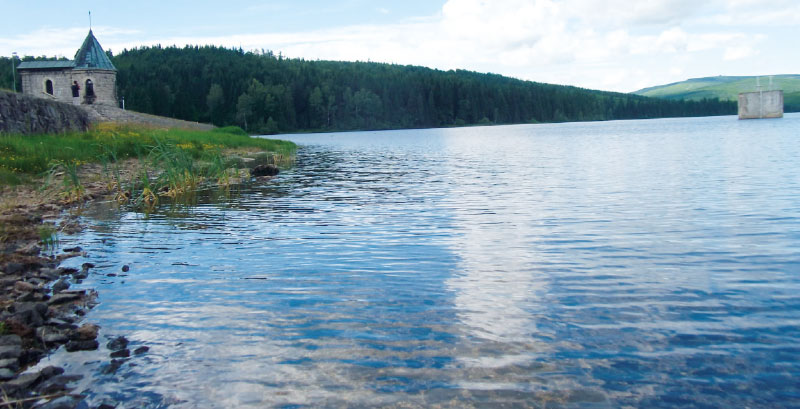
Fig. 3. Water, later drinking water reservoir Souš, built in 1915 on the Černá Desná river. The dam was reconstructed in the 1920s and 1970s, after the catastrophe of a reservoir in the parallel Bílá Desná river valley; June 2012 (Photo: D. Vondrák)
Similarly extensive and interesting was the summary of the history of Jizera Mountains forests by doc. Ivan Kuneš (FLD CZU) in the section dedicated to forest soils and forests. The lecture was also a presentation of a new article [6] – a joint effort of FLD CZU experts and colleagues from ÚHÚL and the Jizera Mountains PLA Administration. Dr. Jan Hofmeister, from another FLD CZU working group, focused on the structure of forest stands in Jizerskohorské bučiny NNR and their importance within the Czech Republic. An overview of the soil situation in the Jizera Mountains in recent decades, which was presented by prof. Luboš Borůvka and Dr. Václav Tejnecký (FAPPZ CZU), was also important. Dr. Radek Novotný outlined the activities of Forestry and Game Management Research Institute (VÚLHM) in the Jizera Mountains, focused on the condition of forest soils and the level of nutrition of woody plants. Dr. Ondřej Špulák (VÚLHM – Opočno Research Station) presented (also on behalf of his colleague Dr. Dušan Kacálek) the results of microclimatic investigations on cultivation and ecological experiments in the Jizera Mountains. Ing. Otto Kučera with Ing. Lucie Podroužková (ÚHÚL) chose the topic of water retention in the landscape, using the example of the upper stream of the Smědá river – an investigation and subsequent proposal of measures to restore the landscape’s water regime and to slow down water runoff.
The afternoon programme was devoted to waters. The film screening was followed by a comprehensive lecture by Dr. Pavel Dobiáš and doc. Petr Dolejš from the W&ET Team company, mapping the development of technology in the Souš and Bedřichov water treatment plants over the last 30 years. The treatment process was complicated here by a high content of humic substances and dissolved aluminium, and in certain periods also with a large concentration of dinoflagellates and cyanobacteria (Merismopedia sp.) in the raw water of the Souš and Josefův Důl reservoirs. Both treatment plants underwent significant modernization and transition from direct filtration to flotation-filtration treatment plants, with a higher separation efficiency and thus also a higher safety of drinking water production. No less extensive was the presentation of four decades of monitoring of drinking water reservoirs in the Jizera Mountains, Souš and Josefův Důl, by their manager, Povodí Labe, state enterprise. Ing. Luděk Rederer and Dr. Václav Koza showed the results of the liming of Souš between 1996 and 2016 and trends related to the decline in water acidity and climate change. In addition to the basic water chemistry, they commented on the structure and abundance of phytoplankton, including the excessive development of pico-sized algae (Merismopedia sp.) in Josefův Důl over the last 15 years.
Dr. Lenka Procházková (Faculty of Science, Charles University) and Dr. Zuzana Hořická (TGM WRI) showed the development of phytoplankton and zooplankton of the Bedřichov, Souš, and Josefův Důl water reservoirs between 1992 and 2021 with the gradual recovery from acidification. Their lectures were supplemented by the enthusiastic contribution of Dr. Martin Pusztai (CXI and Faculty of Science, TUL, and Faculty of Science, Charles University) about the significance and beauty of Chrysophyceae, which are the most numerous group of planktonic algae in Josefův Důl and Souš. Dr. Olga Lepšová-Skácelová (Faculty of Science, University of South Bohemia) contributed with a study of periphyton in the tributaries of all three reservoirs in 1996 and then in 2008, when the anthropogenic acidification had subsided, but the unstable chemistry and natural acidity of the Jizera Mountains waters continued to manifest. Doc. Pavel Jurajda (on behalf of the team from Institute of Vertebrate Biology, CAS, and Povodí Labe, state enterprise) spoke about the fish communities in the Souš and Josefův Důl drinking water reservoirs since 2016, mentioning the results of the research by Dr. Miroslav Švátora (Faculty of Science, Charles University) from 1997–2015 regarding the successful reintroduction of brook trout in Bedřichov and Souš. Brook trout and brown trout are currently released in Souš (where the share of brown trout is increasing); brook trout, common minnow and (since 2023) also brown trout in Josefův Důl. On behalf of his colleagues from Faculty of Science, MUNI, and Faculty of Science, University of South Bohemia, Dr. Jan Sychra presented results of the study of littoral communities of invertebrates in standing waters of the Šumava, Ore, and Jizera Mountains in the context of their recovery from acidification. In particular, he dealt with true bugs and water bugs (Heteroptera) of the Jizera Mountains. Together with Ing. Pavel Vonička (Museum of North Bohemia, Liberec) and other collaborators, he proved that these mountains are extremely rich in them [7]. The lecture part of the seminar was complemented by the presentation of doc. Josef Křeček (Faculty of Civil Engineering, CTU) about the Earthwatch project (as an example of citizen science) applied in the multidisciplinary research in the Jizera Mountains basins.
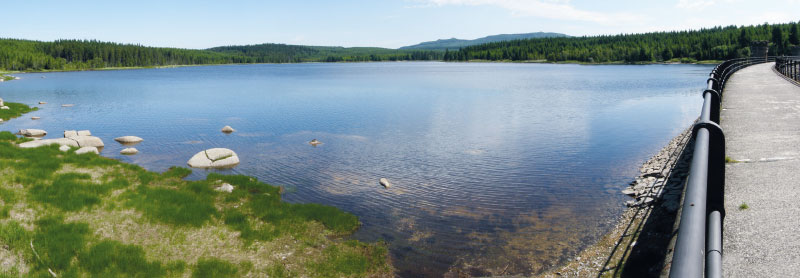
Fig. 4. Water reservoir Bedřichov, built in 1905 on the Černá Nisa river. On the horizon, the Ptačí kupy (1,013 m a.s.l.) and Holubník (1,071 m a. s. l.) mts., reforested after many years; June 2012 (Photo: D. Vondrák)
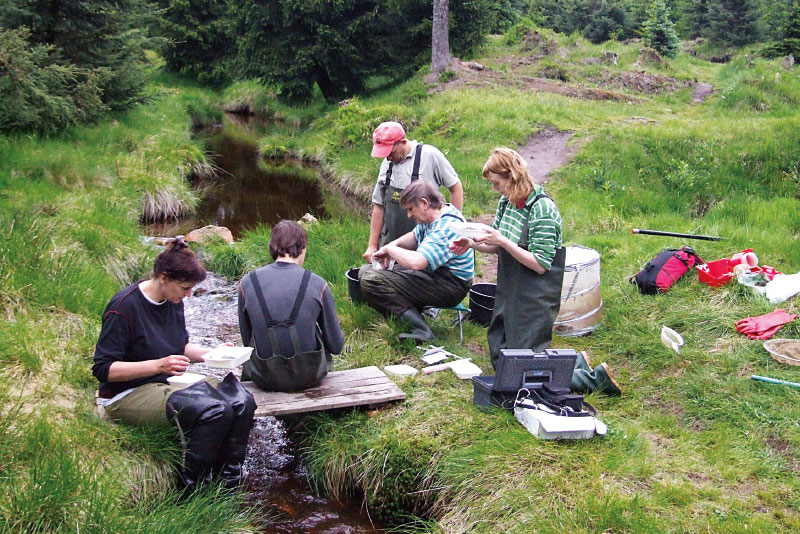
Fig. 5. Field work – a study of the brook trout (Salvelinus fontinalis) population and benthic organisms in the Černá Nisa river. From left to right: Zuzana Hořická, Jiří Hušek Jr., Kamil Farský, Miroslav Švátora, and Lucie Burdová; June 2008 (Photo: M. Kaftan)
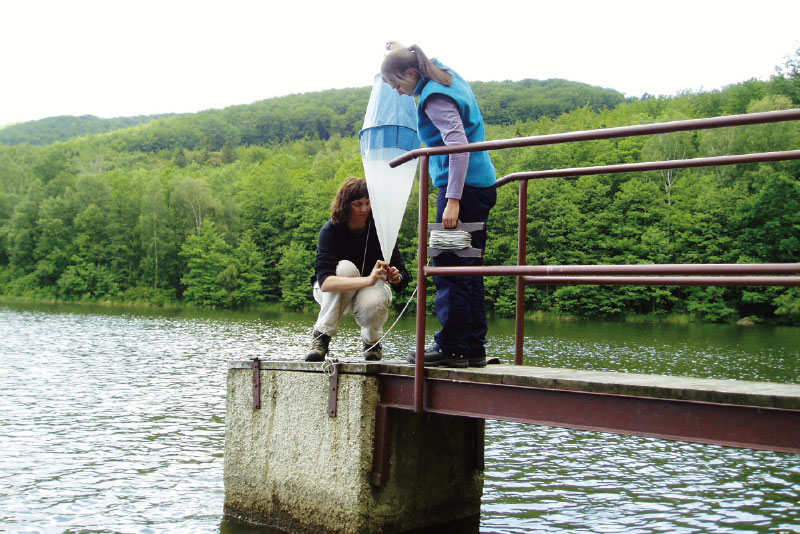
Fig. 6. Sampling the zooplankton – the Šolcův pond near Raspenava, situated in beech stands of the northern slope of the mountains, was a control site in studies of the upper plateau reservoirs; July 2004 (Photo: the author’s archive)
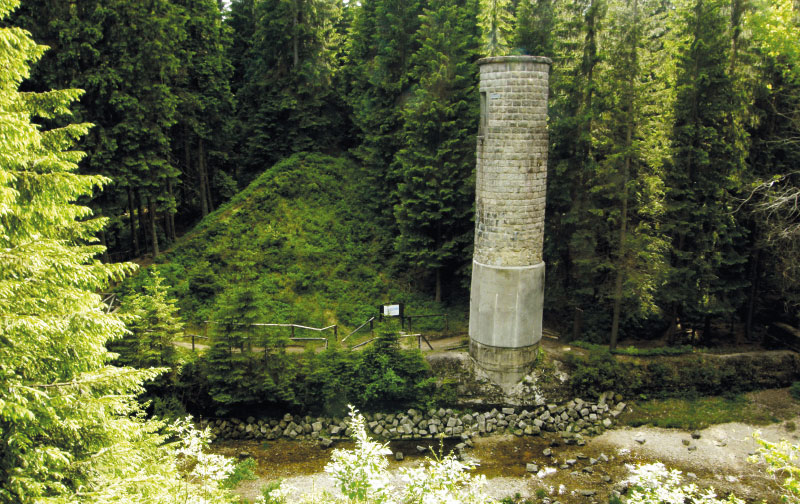
Fig. 7. The “Burst” Dam on the Bílá Desná river – ruins of the dam burst in 1916, less than one year after the construction; June 2012 (Photo: D. Vondrák)
Fig. 8. Typical brown waters of the Jizera Mts., rich in humic substances (Photo: D. Vondrák)
To conclude the event, a discussion was opened about the recent development and current state of nature and tourism in the Jizera Mountains and about the possibilities and difficult compromises in planning the future development. The discussion was led by Ing. Jiří Hušek (Director of Jizera Mountains PLA Administration), prof. Luboš Borůvka (FAPPZ CZU), prof. Jakub Hruška (Czech Geological Survey and Global Change Research Institute, CAS), doc. Ivan Kuneš (FLD CZU), and Dr. Jan Sychra (Faculty of Science, MUNI). The starting point for the questions and the exchange of views was the fact that the condition of soils is still unfavourable, waters have only partially recovered from acidification, the mountains are excessively burdened by tourists, and spruce monocultures are growing again in the basins. The fact that management of this area is complex and creates potential conflict was manifested by some verbal arguments on the usual topic of ecology (more nature-friendly forest management) versus wood production. Nevertheless, there were also other, interesting and helpful contributions.
The opportunity to discuss and chat even after the seminar was over was provided to some of the participants by the “lobby” – a room provided by a nearby restaurant.
Despite the rich and demanding programme, the day-long meeting had a good atmosphere and was met with a warm response. Proceedings are being prepared from the responses of a questionnaire prepared for researchers and “administrators” of the Jizera Mountains. The questionnaire aimed mainly on their focus in research or their role in maintenance and management, on the results of their work, and their opinion on the current state of the mountains. It already seems that a similar meeting could take place again, and even bring researchers back to the Jizera Mountains. It will probably be organized by Jizera Mountains PLA Administration in 2027 to mark the 60th anniversary of designation of the PLA.
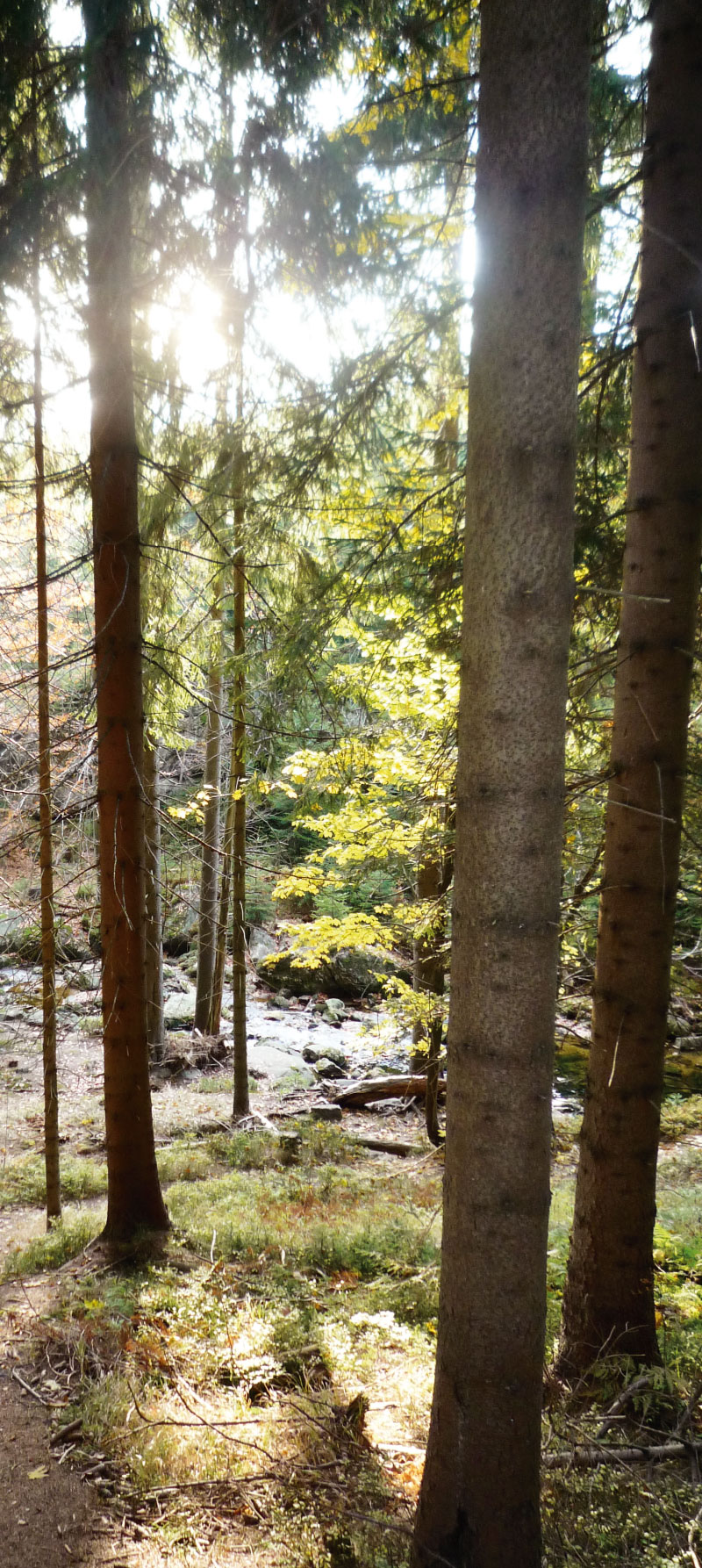
Fig. 9. Boulder bed of Kamenice above the Josefodal Dam; October 2010 (Photo: L. Tkadlec)
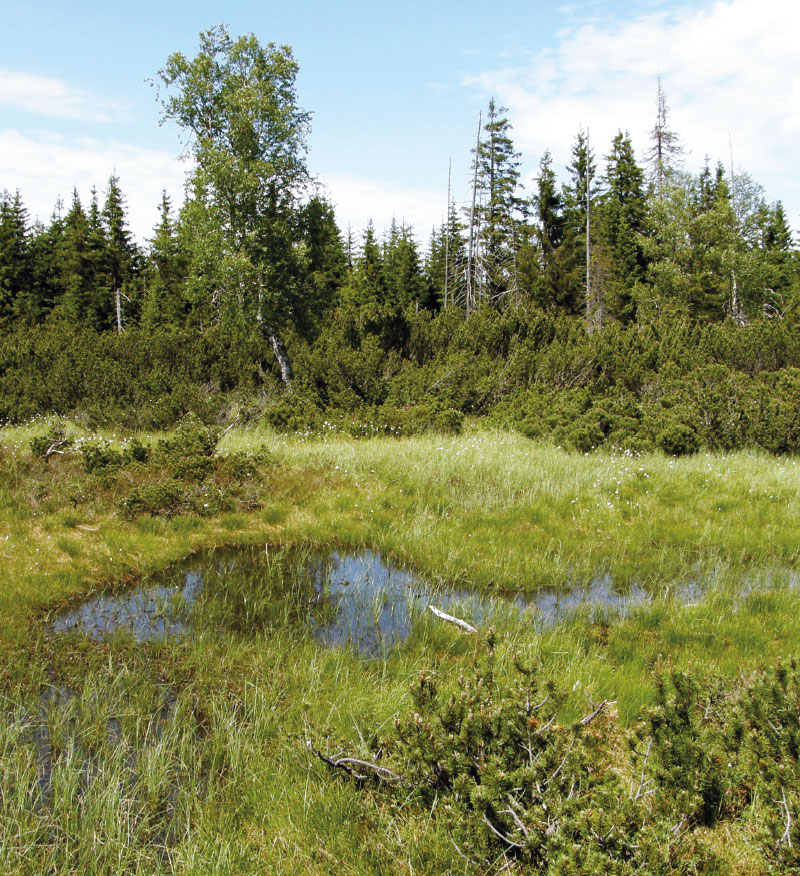
Fig. 10. The Rašeliniště Jizerky moorland with blooming cotton grass – a valuable nature territory (NNR), strongly devastated by human activities and acid rain in the past; June 2012 (Photo: D. Vondrák)
This informative article has not been peer-reviewed.
